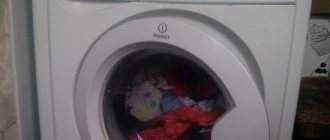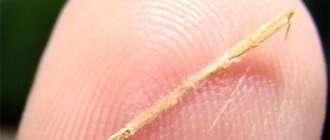In the field of construction and repair, craftsmen have long been actively using new, more efficient fastening elements, namely, anchor bolts. Judging by numerous consumer reviews, these products provide reliable fastening to concrete and wooden surfaces. However, installing an anchor is much easier than removing it. For this reason, the question of how to remove an anchor bolt from a wall is very relevant. Knowing the technology and having the right tools, it will not be difficult to cope with this work. You will find information on how to remove an anchor bolt from a wall in this article.
How to remove a whole, broken or rusty anchor bolt from a thread
Anchor fastening is considered the most reliable and is usually designed to last for many years. For example, this is how water tanks and even parts of walls are hung during construction. But what if the element needs to be completely removed? Removing an anchor bolt from a concrete wall is quite easy if it is in good condition and has been installed correctly. If the installation was carried out with errors or the bolt was damaged during operation, you will have to work hard.
Dismantling in difficult cases
In case of various installation errors, the anchor becomes jammed and it is impossible to remove or push the bolt.
The sleeve is completely driven into the wall
This is the most common case. If you need to remove an anchor from a concrete wall, we are usually talking about an indoor space. The best recipe is to break the plaster around so that the pliers catch on the edge of the sleeve.
If you need to remove the anchor without damaging the adjacent surface (primarily tiles or plastic window slope):
- Remove the nut, knock out the bolt or loosen it (for a frame structure).
- Screw a thin self-tapping screw between the bolt and the sleeve until it jams.
- Place something for support (for example, a hammer).
- Grasp both studs and pull out the structure.
If the first option doesn't help:
- Remove the nut and knock out the stud or unscrew the bolt.
- Use a thin nail or self-tapping screw as a wedge to tear and bend the edge of the sleeve.
- Grab the cartridge by the bent edge (it’s convenient to first pull it with narrow- or round-nose pliers; when the edge is released enough, take pliers) and pull it out.
- For a frame anchor, insert it into the concrete passage and screw the bolt into the spacer and remove everything together.
The anchor is rusty
A slightly rusted anchor bolt can be restored with automotive rust converter, machine lubricant, or WD-40 remover.
- Remove the top layer of dirt and, if possible, rust.
- Treat the head and nut, if possible, spray deep into the converter.
- Maintain the time specified in the instructions for the product.
- If necessary, repeat the procedure.
- Try to carefully unscrew the bolt.
Advice On the forums they suggest treating oxidized parts with kerosene or VD-40 and leaving for half a day for the product to take effect.
The slot on the bolt is torn off
Broken splines are a fairly rare occurrence on anchor fasteners. However, if this happens, it is not necessary to dismantle the wall. Try drilling out the head, or the rod if there is no head, to remove the bolt from the threads. An “extractor” for screws and screws copes well with this task. This is an inexpensive device with attachments that are suitable for both a screwdriver and a drill. You can buy it on AliExpress for little money.
How to use the extractor:
- Attach and secure the bit with the drill (curved cross) facing down.
- Drill a hole in the stud or bolt head.
- Turn the extractor over with the wedge-shaped end facing down and screw it into the stud.
- Engage reverse and release the broken bolt using the extractor.
With proper installation and operation, the anchor bolts are removed with force, but quite simply. In rare cases, when it is impossible to hook the sleeve (for example, bad steel, the edge breaks) or the fastener is “stuck” tightly, the only option remains is to cut off the head or cut the anchor itself with a Bulgarian saw. If the anchor was holding a Swedish corner or other weight on the wall, perhaps the best option is to drive in a stud and cover everything with a wooden bobbin or cement and simply put finishing plaster on top.
Drilling out the anchor completely
A slightly less radical method in relation to the wall, but destructive for both parts of the work. Both the wall surface and the fastening element itself will suffer.
Using a drill, drill out the bolt. To do this, drill holes nearby or guide the drill through the anchor.
Even with the utmost care, destruction cannot be avoided, so they turn to this method in case of emergency.
Removing an anchor is more difficult than driving it in. Therefore, it is better to avoid situations where the fastener is accidentally clogged.
Varieties
When choosing anchors, you can come across several types of such fasteners. All of them are designed for different tasks, so before purchasing you should figure out where and how the bolt will be secured. Having studied the features of such products, you can understand how to properly remove the anchor from the wall. All of them are divided into several types:
- Products with a nut. Such anchors are the most common. They consist of a cylinder, inside of which there is a bolt with a tapered end. The operating principle of the design is based on the fact that when tightened, the bushing becomes wedged. This ensures reliable fastening of the structure to the wall.
- With a hook. Anchors of this type differ only in that on the top there is not a nut, but a hook. It provides ease of use with fasteners. Hardware is often used when fixing lamps and chandeliers, as well as as elements on which water heaters and other devices are installed.
- With a ring. At the top of such products there is a ring, which is designed for convenient fixation of various objects. As a rule, such anchors are purchased for indoor installation.
- Double-spaced. They differ from the others in that they have 2 bushings at once. When a nut is tightened in such bolts, one of the bushings enters the other and pushes it apart. In this case, the first one also becomes wedged.
Anchors are divided into 3 types according to the features of fastening, which will be discussed in more detail below.
There are several ways to remove a double-expansion anchor from a wall, so you need to prepare the necessary tools in advance.
Five effective ways to remove an anchor
- 1. Few people know how to pull out an anchor, because it is not so easy. Therefore, think carefully before you decide to install an anchor - whether you need it in this particular place. Most often, the anchors are pulled out, which is called “with meat” - the resulting hole is sealed with putty.
- 2. Unscrew the nut, punch the pin further away from the cage so that it does not push the cage apart. Try to use something to pull the clip out. If successful, you will be able to get the hairpin itself.
- 3. The connection between the bolt and nut is drilled out. If there is a reserve, the bolt is knocked inward, the cage with the nut is pulled out. After this, the bolt itself is removed.
- 4. The pin is driven into the cage as much as possible - break the concrete around the anchor to a depth of at least 1 cm. After this, the anchor is safely pulled out using pliers.
- 5. If the anchor is made of weak metal, try to drill it out. However, be that as it may, after removing the anchor from the wall, a section of the ceiling or wall will still have to be plastered.
Effective ways to remove an anchor
To get the anchor, you can choose one of five methods:
- Removal using construction pliers. Construction cutters are used. The resulting hole can be sealed with a repair mixture.
- Loosening of the capsule. First, unscrew the nut to reduce the diameter of the capsule. To do this, the bolt is driven into the wall. After such actions, it will be much easier to pull the structure out of the wall.
- Drilling out the product. This method involves drilling the place where the bushing connects to the nut.
- Drilling out concrete near fasteners. Before breaking the concrete, the nut must be removed to loosen the cylinder. It is enough to destroy the wall around the bolt to a distance equal to half its length. After this, it can be easily removed with pliers.
- Creating a hole near the anchor. To get the fasteners, you can drill a hole in the wall at a distance equal to the length of the anchor. In this case, it should be located next to it. After this, the fasteners are removed with wire cutters almost effortlessly. If one hole is not enough, a second one is drilled. After the work is completed, you can cover this area with putty.
Using any of the above methods, you can easily remove the anchor from the wall without spending a lot of time.
How to remove a working anchor
- the hole for the anchor must be equal in length to it;
- the sleeve should protrude from the wall so much that it can be picked up with pliers (for further dismantling);
- hammering an anchor by hitting a nut, bolt, hook is highly not recommended - it is better to lay a wooden block or the like. shock absorber to avoid damaging the thread;
- In order not to tear off the bolt slot, you need to use a high-quality and clearly suitable screwdriver, as well as medium speed screwdriver.
Important When placed outdoors or in damp areas, the anchor fasteners require anti-corrosion protection.
Removing a working nut anchor:
- Remove the nut.
- Hit the bolt with a hammer through the gasket so that the expanding element comes out of the sleeve.
- Push the pin deep into the wall so as to free a small edge of the cartridge.
- Grab the sleeve with a suitable tool and pull it out.
Removing a working frame anchor:
- Completely unscrew the anchor screw.
- Pick up and pull out the sleeve.
- Insert a screw into the hole in the wall so that it connects to the removable anchoring part.
- Screw the screw into the expansion element.
- Pull out the entire structure.
Advice It is not necessary to remove anchor sleeves from the walls: they can be driven deeper so that they do not protrude beyond the wall, and covered with a plastic or wooden sleeve or cement.
Getting to know the fastener
Durable metal is used to make anchors. Due to the special design and high-quality material, such a bolt can withstand large static and dynamic loads. On the shelves of specialized stores, a wide range of different anchor bolts is presented to consumers. Judging by the reviews, most craftsmen use mechanical expansion anchors.
How to remove an anchor from a wall
On the territory of the current Russian Federation, the construction industry is moving forward by leaps and bounds - every year many different new products are introduced, including in the field of fastenings. Manufacturers are actively developing more durable and reliable types of fasteners.
Anchor - reliable and effective fastening
Today, in any hardware store you can freely purchase anchors that can easily withstand impressive loads - it is logical that they have become widespread. A thin metal sleeve with longitudinal cuts is the basis of the anchor. A screw or, alternatively, a bolt is screwed into it, and a metal plug-nut in the form of a cone is also pulled in. Ultimately, the said sleeve is firmly installed in the wall of the building, and the bolt is pressed against the base. The main purpose of anchors is to ensure reliable fastening of structures whose weight often exceeds 100 kg. In domestic conditions, they are used in the process of installing door and window frames, chandeliers, as well as for installing a suspended ceiling.
What is an anchor bolt and what design does it have?
An anchor bolt is a reliable hardware product to ensure high-quality fixation of heavy structures: door frames, suspended ceiling modules, etc. The design of an anchor bolt includes several basic elements: a sleeve, a cone-shaped bolt or a cone-shaped nut.
When the sleeve is installed in the hole, the bolt attracts the cone-shaped nut (or vice versa), which in turn opens the sleeve, thereby ensuring reliable fixation of the anchor in the wall. Anchor bolts can withstand various loads, from 100 kg or more.
However, sometimes it happens that due to errors (the markings were made incorrectly), or other situations, you need to quickly pull the anchor bolt out of the wall. Sometimes this is not easy to do, because the sleeve literally digs into the wall and very poorly restores its original shape.
Types of anchor fastening
Anchor bolts can be wedge, expansion and driven. Having understood the features of these structures, you can quickly remove them from the wall if necessary.
Drive-in anchors
Such fasteners consist of a cylinder-shaped sleeve. It has several slots located longitudinally. There are usually notches on the outside that improve adhesion to the concrete surface. If there are no notches, this indicates that the anchor can be chosen not only as a fastener, but also as a decorative element.
To install anchor bolts into the wall, a hole of a certain depth is first drilled. The diameter is selected so that the product is placed in the channel only with force. It is worth considering that placing the anchor in the wall occurs only after the drilled hole is completely cleaned. After this, the firing pin is inserted into the cylinder and hit with a hammer until the longitudinal slots spread to the maximum possible width.
Often, beginners ask the question of how to remove an anchor bolt from a brick wall. It will be much easier to cope with this task if you have a drill at hand. The craftsman needs to process the nut itself with a drill, and then drive the bolt assembly inside the cone-shaped capsule. After performing these steps, the anchor clip is easily removed from the hole in the concrete or brick wall.
Also considered quite effective is the method of removing bolts using an angle grinder, which in everyday life is mainly called an angle grinder. Before removing an anchor bolt from a concrete wall, you need to do the following:
- Drill the bolt.
- Make a thread in the resulting hole using a tap.
- Next, screw a new bolt into this threaded hole. Its diameter should be smaller.
To remove the anchor, the bolt screwed into it should be held securely while simultaneously turning the nut and cage. At this stage it is very important to secure the locknut. Only after this can it be unscrewed and removed. At the very end, the outer nut is simply cut off with a grinder. The remaining rod must be pushed inside the capsule by hitting it with a hammer.
How to unscrew a regular bolt from a threaded hole
Problems with unscrewing from a threaded hole can occur not only with anchor bolts, but also with ordinary bolts. This situation often occurs when the bolt has an almost completely missing head or its side edges are severely crumpled. To remove such a bolt from the wall, you can use one of the following methods.
- You can rotate a bolt whose head is badly worn using a sharp core placed at an angle to the top of the fastener.
- On the worn head of the bolt, using a grinder, make a slot into which the tip of a screwdriver is inserted and try to use it to pull out the fastener.
- You can remove a bolt that cannot be removed from the wall using a tap with a left-hand thread by screwing it into a pre-made threaded hole. If you do not have such a tap on hand, then instead you can use a screwdriver, the tip of which is sharpened to a “cone”.
- To remove the bolt from the wall, you can also use a tap with a right-hand thread. To do this, the tool must be screwed into a hole previously prepared in the head of the fastener, and then firmly fixed to it by welding.
- The most radical method of removing a bolt from a wall is to drill it out. For this purpose, use a drill whose diameter is closest to the cross-sectional size of the fastening element itself.
Methods for removing broken bolts depending on the location of the break
Finally, take a look at the seven best ways to remove broken bolts.











